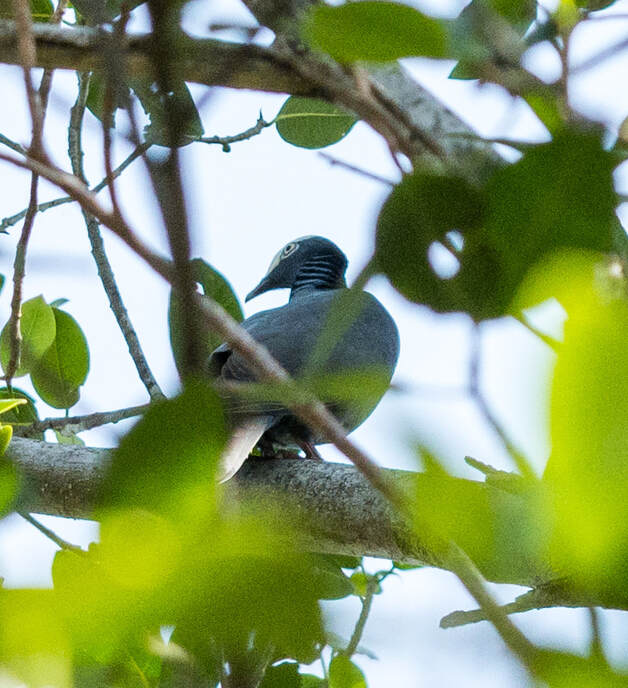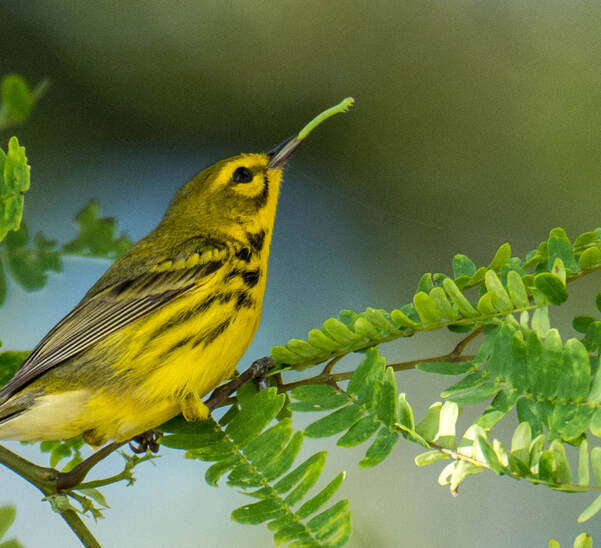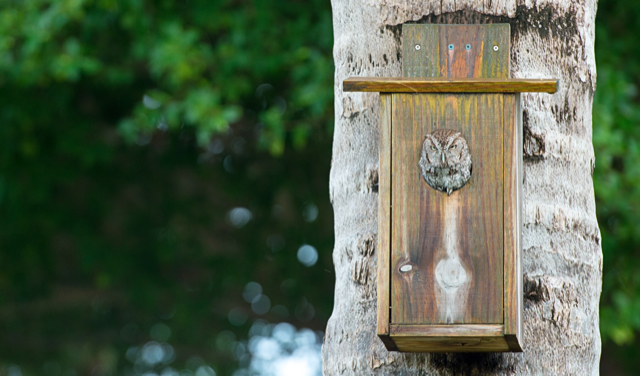|
Never will I forget the words of Jean Geddes, full-time Keys resident, fisherman and naturalist, and one never afraid to speak her mind. whom I met in the early 80’s. She said her favorite time of year was when the White Crowned Pigeons arrive and at the same time, the winter “snowbirds” depart. It is the frenetic pace of the season with the “three activities a day crowd,” plus feedings, that keeps Keys service workers and professionals in our tourism economy busy, and longing for the calmer days of the off-season. All they have to do is endure “Spring Break.” For years I’d make note of the first White Crowned Pigeon (Patagioenas leucocephala) I’d see, usually in late March or April, after they’ve flown from Central and South America, across the Gulf of Mexico. When they stop here they need water and food. Figs are high on their list… all sorts of figs, which are full of nutrition for our feathered travelers. My home is surrounded by a majority of native plants, including a large Banyan Tree (Ficus benghalensis.) White Crowned Pigeons also favor gumbo-limbo, blolly, poisonwood, rough strongbark, and ironwood trees. This year, while sitting under the fig tree and waiting, I managed to photograph my first White Crowned Pigeon. It is a challenge is to maneuver into a good clear vantage point for viewing the birds, without alerting them to your presence. I found it particularly helpful to use my Nikon 180 - 600 mm lens and stand in the shadows so I could watch without being discovered. In just a few weeks benefiting from the tips about what to look for and where to stand, I was able to get close-up photos of various birds in my yard including a Palm Warbler (Setophaga palmarum), Common Yellowthroat (Geothlypis trichas), Painted Bunting (Passerina ciris), White-Crowned Pigeon (Patagioenas leucocephala), and Prairie Warbler (Setophaga discolor). After all I’ve learned about finding migrating birds in the outdoors, my most unusual bird sighting was inside the home of Gail and Spike. While working on a photo project we were distracted by the flapping of a bird trying to get out. From high above on the window ledge the bird looked out and repeatedly was repelled by the clear glass barrier keeping him in. It darted up to the curtain and clung onto the fabric, probably wondering where is my branch? Confused, hungry and thirsty, this bird needed out. We called Ocean Reef’s naturalist Jeanette, who was there instantly and within a couple minutes had netted the bird. Jeanette took him out into the sunshine among the trees and flowers and butterflies and released it and as the bird flew off, I recognized that bird as the one often seen flying in pairs in the late afternoon catching mosquitos. From my photos the bird was identified as a Chimney Swift (Chaetura pelagica), and sure enough it feeds primarily on flying insects and it mates for life. It also likes chimneys, but it is unclear if the bird entered the house through the chimney or an open door. It is helpful if you can identify the birds by learning their songs. The Merlin app which listens for birds can give a pretty accurate ID to aid in visual identification. Unfortunately the spring migration coincides with the departure of our snowbirds, who also have a loud call… caused by the rumble of their jet engines warming up on the nearby airport runway, which successfully drowns out any bird call. "Practical bird-protection means not only preventing the destruction of birds but creating conditions which shall make the world more habitable for them. Tree planting for birds should be given especial consideration on Arbor Days"
1 Comment
With its cooler, dryer temperatures, winter has finally arrived in the Florida Keys and the time to get out and explore nature is right here and now. With that in mind I signed up for the 2023 Croc Lake Audubon Christmas Bird Count. In its 5th year since becoming an official Count Circle, I was assigned to a group with an experienced birder and other volunteers to seek out and identify birds, keep the bird tally log, and photograph. The Christmas Bird Count is in its 124th year dating back to 1900, when ornithologist Frank Chapman started the tradition of the Christmas Bird Count (CBC) that would count birds during the holidays rather than hunt them. Prior to 1900, a "Christmas Side Hunt" tradition existed, where hunters at a Christmas gathering, would divide into teams, go out for an afternoon of killing wildlife, both furred and feathered, and return to tally up the dead carcasses and declare a winner. Can't really say anyone was the winner, as the animals were not even intended for the dining table. This was my second attempt at joining the CBC event. In 2022 I showed up ill prepared for the rainy weather, as we walked through wet grass, with now wet feet, plus my new camera anxiety caused me to quit after only an hour. The goal is to arrive at 7 am and count the entire day, and finish about 5 pm. So for 2023 I set out prepared. I had weather appropriate, lightweight clothing and closed toed shoes, a waterproof backpack to stash my camera gear in case of rain, sunscreen, water, and I had the most important item needed - an inexpensive pair of binoculars recommended by Audubon. In 2023 again we had rain, in fact four days of tropical squalls and daylong downpours preceded the count. The Sunday morning of the CBC, the weather was clearing, but rain arrived early. Our group decided to take a breakfast break until the rain cleared. Fellow volunteer and woodsman Jack rationalized, ”If the birds aren’t out in the rain, we probably shouldn’t be either.” An organized group event such as the CBC, held annually between December 14th and January 5th, is a great way to be outdoors and meet new people, and the count is free and open to everyone regardless of bird ID skill level. Don’t worry about what you don’t know, naturalists are very willing to share their knowledge with you. Birding is a challenge for sure. Especially if you are not familiar with their calls, have poor hearing or don’t know what you are looking at. I can check all of the above boxes! It was hilarious as the group would point out a bird that for the life of me I could not see. That’s normal, the bird has stopped moving, they assured me, look for the movement of the leaves. That helped, and when finally I saw the bird there would be a celebration. After finding the bird, raising the camera and getting in focus, I had to act quickly before the bird is gone. I guess that's why I have a lot of photos of birds flying away! The thrill of the hunt! The CBC is a great example of citizen science, the practice of enlisting a large group of volunteers to collect and share data as part of a larger story. Our group, one of six in this year’s Croc Lake CBC, sited 26 different species and 259 birds total that day. Aside from organized events such as the CBC, individuals can collect data on their own. Our group leader Chrissy told me she keeps track of the species of birds, and the dates they arrive to her yard. When I asked if she shared the info, she said it was more so she would know when to expect some of her favorite birds. My birder friend Harold encouraged me to enter data on eBird after my rare sighting of Black Swans in Key Largo this summer. He emphasized the importance of recording sightings, as trends show up over time, and are used to study the long-term health of bird populations. The only way the CBC could have been more fun is if there were more people doing it. By the end of the long day, we were power walking the trails so we could get to all the areas on our list. It would have been much better with more volunteers to divide the territory up into smaller portions and spend more time in observation. The weather’s great and the birds are here. Grab a friend and take a walk outside at Dagny Johnson Key Largo Hammock Botanical State Park, located on County Road 905, half-mile north of the intersection with U.S. Highway 1 at Mile Marker 106. It is open from sunrise to sunset 365 days a year.
My favorite times of day are near dusk and dawn. The time of day, when the shadows get longer and you can sit outside without a hat on, with coffee or cold drink in hand, and contemplate the wonders of nature. It’s the time of day full of chirping and songs, and the emergence of the critters. It’s the time before the sounds of daily human activities; the din of lawn mowers and leaf blowers, the constant chatter of workmen nearby. Think of how your morning walk would change if you pulled out the headphone plugs, and simply listened to the sounds of nature. Tune in not out. I will use my iPhone on nature walks; it has an app called “Merlin” that listens to and records bird sounds, and in real time suggests a possible identification. For me, a nature lover who basically knows nothing, it has opened up a world of knowledge, and has brought me even closer to nature. As the names of birds are popping up on the screen, you get an idea of what may be making the sound, and aiding you in visually identifying it. The app can also be used by someone with a hearing loss, someone who can hear, but the sounds may not be crisp enough. As areas are developed, and natural land is changed, birds lose their favorite trees and water sources. Several of my friends have installed screech owl nesting boxes, in their yards, within view of their windows or porches. In the wild, screech owls nest in abandoned holes created by woodpeckers for example. Before I get a nesting box, I need to use “Merlin” to see if I already have owls in my yard, or vicinity. There might just be a natural "house" in my wooded acreage. “Birders” are a pretty great bunch of people. A friend was invited for a cocktail at the home of a neighbor who had a “screech owl” nesting box in a palm tree outside the porch. Yes, lively Key Largo nightlife…sipping on a drink while listing to the “HOO”. She later found an appropriate spot in her own yard, where she could enjoy the owls, who came year after year thereafter, until hurricane Irma tore the house down. Have you ever heard someone say they never see any birds in their yards? Or maybe they do not know where to start looking for birds. The answer is, look in your backyard. Ask yourself, what does a migrating bird or even a local bird, have to eat in your yard? Do you have any native plants? With development and habitat loss, there are increasing pressures on wildlife. If everybody just planted one native plant, that's a start. In a suburban jungle one native tree may be fruiting, while in another there is pollen and nectar attracting bugs and caterpillars. That is what they need to eat. It's like you going to the store and there is only cat food there. What are you going to eat? Birds need fresh water, and cover too, so they may hide from predators. Owls can be a great source for natural pest control and it is free. No pesticide service or poison filled plastic boxes needed! Screech owls feed on all sorts of bugs, cockroaches, lizards, beetles, moths and rodents. Whatever they can see, catch in the air or pounce on is fair game. Spraying for bugs eliminates a food source. Owls can also be threatened by pest control of the another kind… rat traps containing poison are a huge problem. The rat entering the box does not just eat the poison and die there, they eat the poison, then leave the trap, to slowly die from the effects wherever they wander off to. Unfortunately for the birds of prey such as the owl, or the hawk, that same poison does not discriminate between the rat, and the bird that just ate the rat. For all of us, birds alert us to seasonal shifts like migration, teach us about communication, and the cycle of life through behaviors like predation, mating and nesting. Screech owls mate in late fall, and you can hear their noises. The baby owlets emerge from the nesting boxes in April or early May. Nature is the Law. It makes me want to get up early in the morning and keep going. The ecosystem is provided free of charge, no accessories required. And the benefits are lower rates of anxiety, depression and stress.
|
CAROL ELLIS
This photographic website provides me the opportunity for self-expression, for sharing Archives
May 2024
TAGS
All
|
© Copyright 2022. Carol Ellis Photography.
All Rights Reserved.
































 RSS Feed
RSS Feed
